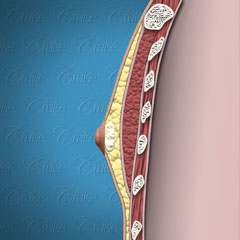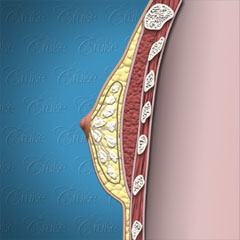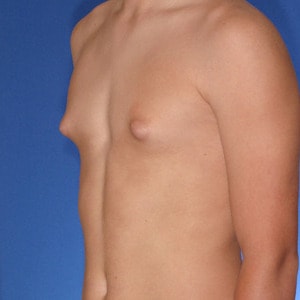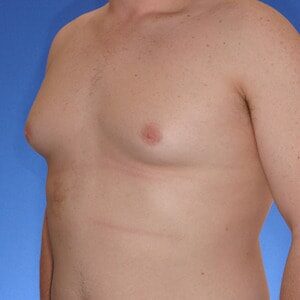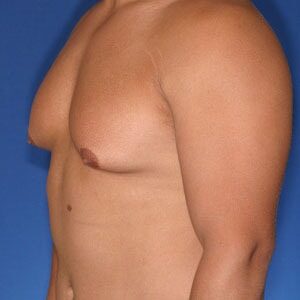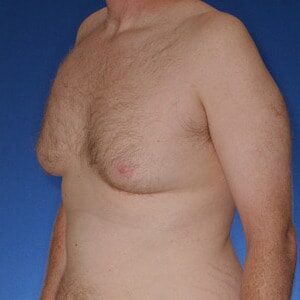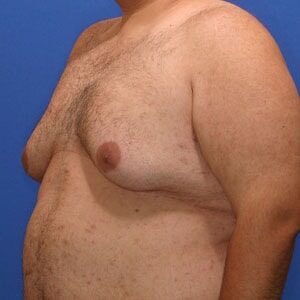The most common type of gynecomastia is called classic gynecomastia. This is when the enlarged breast is caused by a combination of excess breast tissue and an excess of fatty tissue.
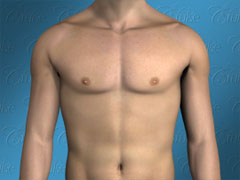
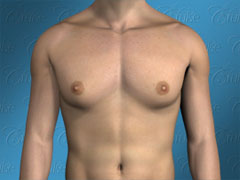
If you look at the picture above on the right, you will notice with class gynecomastia the enlarged breast rounds out at the bottom. The picture of an “ideal” chest on the left shows a more defined horizontal line beneath the chest. The roundness is caused by the presence of excess breast tissue, which prevents the underlying pectorals major muscle to show through. The pectorals major muscle is what creates this horizontal line. The excess breast tissue hangs downward, or sags, in a more round or tear drop appearance.
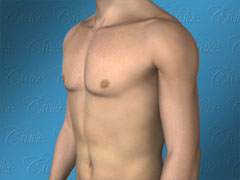
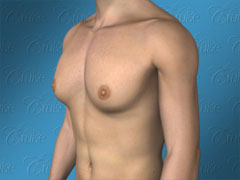
The oblique view above is a very good representation of the change in shape of the male breast when gynecomastia is present. From this angle, you can see the increased projection of the chest especially at and below the nipple. In most cases, the distance from the bottom of the areola to the chest fold is greater than it would be with an “ideal” chest. When classic gynecomastia is surgically corrected, the skin covering this greater distance usually snaps back in a younger male chest. Unfortunately, in older men it may not due to aging of the skin and loss of elasticity. If the skin does not retract back as much as a patient would like, it can be corrected in a minor, secondary procedure under local anesthesia.
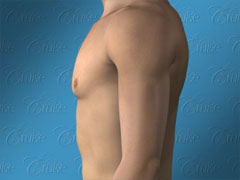
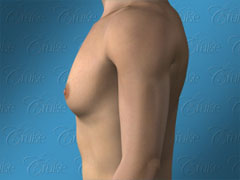
In the above picture, you will notice that the nipple and areola are still flush with the surrounding skin. This is what classifies this as Classic Gynecomastia. If the areola and nipple were protruding outward and not lying flat with the skin, this would be considered a case of “Puffy Nipple.”
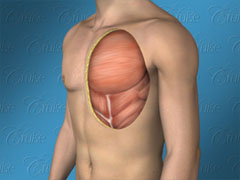
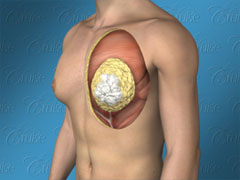
In the diagram above, you can see that Classic Gynecomastia is a combination of excess breast tissue (white) and excess fat (yellow). In most cases, the excess breast tissue is located under the nipple and it can be felt by pinching the tissue underneath the nipple. It will feel firm and a rubbery or squishy.
It is important to understand that EVERY man has some breast tissue located under the nipple. Only if you feel you have an excess of this tissue, and the appearance of your chest has changed, should you consider surgical options.
In the side view below, you notice the excess fat is located under the breast tissue and dispersed within it as well. This excess fat usually spreads out over a larger area in comparison to the “ideal” chest. You can see how it causes the chest to protrude outward and round out below the areola.
